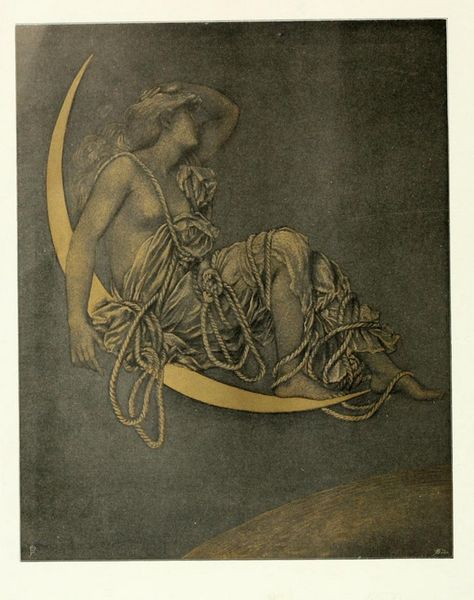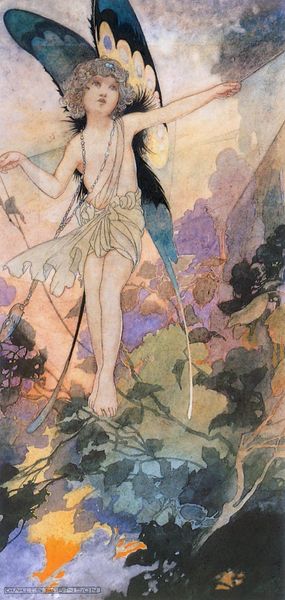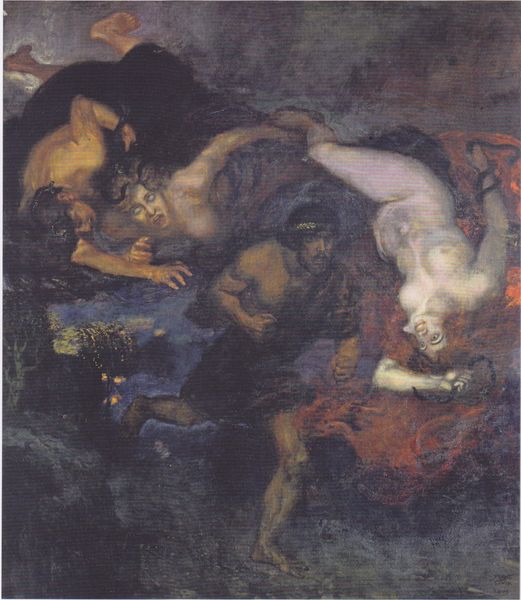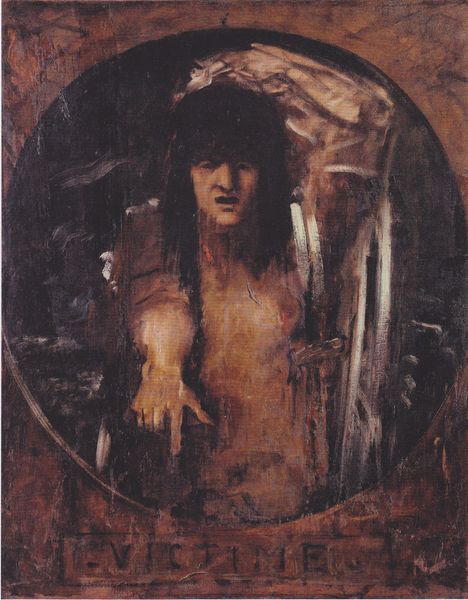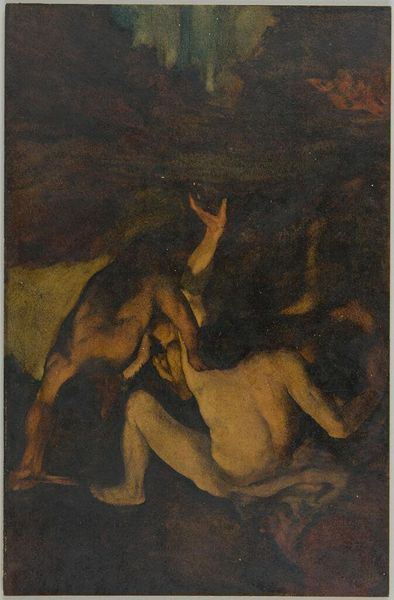
Dimensions: 122 x 105 cm
Copyright: Public domain
Curator: Alphonse Mucha's 1918 painting, "France Embraces Bohemia," offers a rich tableau of symbolism amidst the turmoil of the First World War. He uses oil paint to present an allegorical vision. Editor: It’s visually striking, definitely evokes a mood of tenderness but also great suffering. The pale figure with eyes closed and a figure draped behind a cross shape, it has almost religious undertones but I find it a touch unsettling. Curator: Mucha intended to portray the newly formed alliance between France and Bohemia, now the Czech Republic, as a nurturing embrace after centuries of Habsburg rule. The female figure of Bohemia, stands partially nude. Her vulnerability, juxtaposed with her defiance, speaks to Bohemia’s arduous journey toward independence. Editor: It’s interesting that you frame the nudity within the context of vulnerability and defiance. How much did Mucha consider gender and national identity while creating this image? He could have given her armor instead, or perhaps no visible trauma or discomfort. Curator: It’s critical to remember the cultural climate of the early 20th century and Mucha's broader oeuvre when thinking about these questions of vulnerability and identity. He was commissioned to help build national sentiment through these artworks, of which a nude or partially nude female form would represent the maternal concept of the homeland. The crown of thorns hints at past subjugation, while the French figure offers comfort. The social and institutional factors certainly pushed him to depict the narrative he chose. Editor: And considering his other poster work and decorative panels, particularly with women as the center focus. I agree, gender as it's performed and presented is significant here. How do we understand its significance and make sure viewers aren’t just seeing another eroticised national figure? What about audiences who are not interested or invested in nation building? Curator: Context is key. By presenting this work in conversation with the sociopolitical context in which it was created, alongside the broader history of Czech nationalism and art's role within it, we provide the opportunity for our audiences to contemplate these questions on a larger scale. Editor: Yes, situated between cultural symbolism, painful historical precedent, and questions around representation, Mucha offers an avenue into contemplating not just what was, but what could be.
Comments
No comments
Be the first to comment and join the conversation on the ultimate creative platform.

